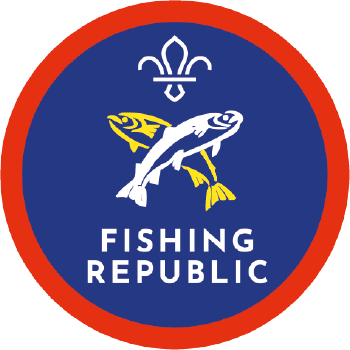
Water safety charades
You’ll need
- Water safety rules on slips of paper
- Shallow container
Before you begin
- Use the safety checklist to help you plan and risk assess your activity. Additional help to carry out your risk assessment, including examples can be found here. Don’t forget to make sure all young people and adults involved in the activity know how to take part safely.
- Put the water safety rules onto slips of paper and keep them in a shallow container
- If on a boat, wear a life jacket or buoyancy aid, whichever is applicable to your environment.
- When freshwater fishing, set up on even ground.
- When you arrive at your fishing spot, check out the area around you and consider where you’d be able to get out of the water if you were to fall in.
- Know where you’re located and how to describe it, in case you need to call the emergency services or report any hazards to a local authority.
- Only wade into the water where the current is weak.
- Keep clear from slippery banks or deep and fast flowing water.
- Beware of overhead cables. Poles and rods conduct electricity. They don't even have to be touching a cable for electricity to jump to it and cause a shock.
- Keep your space tidy. Don’t leave any trip hazards for passers by.
- Be sure to look all around when using long poles and rods, to be sure you don’t strike anyone or anything. You should look around for people, anything overhead (like tree branches or cables) or steep slopes behind you.
- Be aware of how to safely assemble and take apart your tools. You should be particularly careful with sharp objects, like your hooks.
- Don’t walk on ice covered water.
Play the game
- Split the group into two teams. Each team chooses someone to go first, these players select a water safety rule from the shallow container.
- The players must act out the safety rule for their team without talking or showing the piece of paper.
- The player who guesses right for each team is next on and selects a new water rule and proceeds to act it out.
- The winners are the team who managed to guess the most rules once all of the rules have been acted out.
Reflection
When fishing, water safety is of upmost importance this activity allows us to learn the water safety rules in a fun way. Can you think of any other good practice we have not mentioned? What could go wrong if we do not follow the rules?
Safety
All activities must be safely managed. You must complete a thorough risk assessment and take appropriate steps to reduce risk. Use the safety checklist to help you plan and risk assess your activity. Always get approval for the activity, and have suitable supervision and an InTouch process.
- Active games
The game area should be free of hazards. Explain the rules of the game clearly and have a clear way to communicate that the game must stop when needed. Take a look at our guidance on running active games safely.
- Scissors
Supervise young people appropriately when they’re using scissors. Store all sharp objects securely, out of the reach of young people.
You could change water safety for the basic hygiene rules of angling.
You could allow some sounds or keywords to be shared with the teams.
All Scout activities should be inclusive and accessible.
